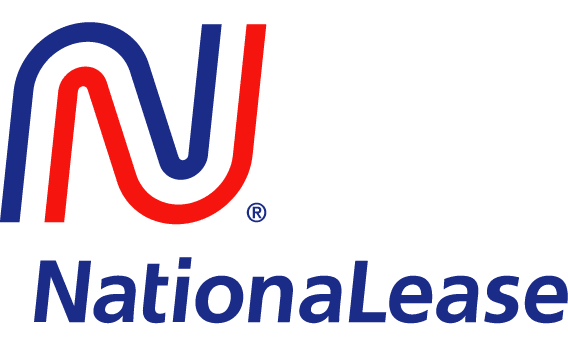The future of accounts payable fraud prevention starts now
Home - The future of accounts payable fraud prevention starts now
Corcentric

Key Takeaways
- Almost 80% of organizations experienced payments fraud attempts in 2024, highlighting the growing sophistication and impact of B2B payment fraud schemes.
- Common AP fraud methods include fake vendors, duplicate invoices, check tampering, ACH fraud, and expense reimbursement schemes exploiting internal weaknesses.
- Vulnerabilities like poor approval workflows, weak separation of duties, and unsecured vendor files increase fraud risk and financial exposure.
- Modern accounts payable fraud prevention requires layered controls — automation, vendor verification, paperless workflows, audits, and employee training — backed by expert managed services.
The release of the most recent 2025 AFP Payments Fraud and Control Survey sent a stark message through the financial world: 79% of organizations experienced attempted or actual payments fraud attacks in 2024 alone. This alarming statistic brings much-needed emphasis to the escalating threat of B2B payment fraud.
These sophisticated attacks, where fraudsters gain unauthorized access to email accounts to redirect financial transactions, cost businesses billions of dollars annually, as reported by the FBI. Such real-world accounts payable fraud cases highlight the evolving tactics employed by cybercriminals and the profound financial and reputational damage that can result from weak accounts payable controls.
The evolving tactics used by fraudsters mean that traditional defense mechanisms are often insufficient. CFOs are now held personally accountable for financial outcomes and the systems designed to protect them, making it imperative to address these evolving accounts payable fraud risks. Additionally, many AP teams still rely on outdated systems with paper-based approvals, scattered email chains, and static ERP reports, which inherently slow operations and increase exposure to risk.
Ultimately, understanding common attack methods, recognizing the vulnerabilities within accounts payable operations, and implementing modern controls are crucial steps in mitigating these risks. By focusing on enhanced vendor oversight and integrating managed services, businesses can fortify their defenses and safeguard their financial health.
For an even closer look at how to design a layered strategy, read our recent article for Spend Matters on preventing payment fraud.
Common accounts payable fraud schemes and their impact
Accounts payable fraud schemes are diverse and constantly evolving, often involving deceptive tactics that exploit weaknesses in financial processes. Understanding these common schemes is crucial for implementing effective accounts payable fraud prevention strategies.
Here are some of the most frequently encountered fraud schemes in accounts payable:
- Fake vendor setups: This scheme involves fraudsters creating fictitious vendors in a company’s system to submit fraudulent invoices. These invoices are for nonexistent goods or services, with the payments diverted to accounts controlled by the fraudster. This can go undetected if vendor verification processes are not stringent, particularly during the onboarding phase or when vendor information is updated. Without rigorous validation, a phantom vendor can drain significant funds over time.
- Duplicate payments: This occurs when the same invoice is submitted and processed multiple times. Fraudsters might resubmit an original invoice or make minor alterations to invoice numbers, dates, or amounts to avoid detection by basic manual checks. The result is overpayments that are then siphoned off by the perpetrator. Automated systems with advanced duplicate invoice detection features are vital to prevent this common, yet often overlooked, form of fraud.
- Check tampering: Although electronic payments are becoming more common, physical checks are still used by many businesses, making them a target for fraudsters. Check tampering involves unauthorized alterations to physical checks, such as changing the payee name and amount or forging signatures, to enable illicit fund redirection. This type of fraud can be carried out by insiders with access to company checks or by external parties who intercept checks in transit.
- ACH fraud: With the increasing reliance on electronic payments, ACH fraud has become a significant threat. This scheme involves manipulating automated clearing house (ACH) electronic payment systems to reroute funds to unauthorized accounts. This is often achieved through sophisticated phishing attacks that trick employees into divulging banking information or by compromising legitimate vendor accounts to change bank details. Insider collusion can also facilitate ACH fraud, where an employee works with external fraudsters.
- Expense reimbursement schemes: This internal fraud involves employees submitting inflated or fictitious expenses for reimbursement. This can range from submitting fake receipts for nonexistent purchases to inflating mileage claims or submitting the same expense multiple times. Lax oversight and manual review processes for expense reports create an environment ripe for such schemes.
Real-world accounts payable fraud cases underscore the importance of vigilance and highlight the significant financial and reputational damage that can result from weak AP controls.
- In one high-profile case, a fraudster gained access to a vendor’s email account and altered legitimate invoices to reroute funds to fraudulent bank accounts. The affected company only discovered the loss after the funds were unrecoverable, highlighting how easily vendor email compromise can go undetected. The sophisticated nature of these attacks often makes them difficult to trace once funds have been transferred.
- In another instance, a global consulting firm was penalized for submitting false invoices with receipts from fake vendors — an external fraud scheme that ultimately led to a global debarment. This case illustrates how even seemingly minor fraudulent activities can have far-reaching consequences, impacting a company’s ability to operate globally.
- Even public figures aren’t immune. Barbara Corcoran, a prominent businesswoman, was nearly defrauded of $400,000 through an email spoofing scam that mimicked her assistant’s account. This incident highlights that even individuals and organizations with robust security measures can be targeted by highly convincing phishing and spoofing tactics.
The risks are most acute where workflows lack structure, leading to scenarios such as a lack of approval workflows, insufficient separation of duties, and vulnerabilities in vendor master files. These weaknesses often lead directly to audit failures and financial losses, making proactive accounts payable fraud detection a strategic imperative.
Why AP is a vulnerable entry point for fraud
Accounts payable operations often present significant vulnerabilities that fraudsters are eager to exploit. The very nature of AP, which involves numerous transactions, multiple stakeholders, and the handling of sensitive financial information, makes it a prime target. The actual disbursement of funds is where vulnerabilities frequently arise, even more so than invoice fraud itself, as this is the point where money leaves the organization.
An efficient accounts payable workflow process encompasses several critical stages: invoice receipt, data capture, validation, approval, and payment execution. Each phase, if not meticulously managed and secured, presents opportunities for fraudulent activities.
Key areas of vulnerability within AP workflows
- No approval workflows: One of the most glaring weaknesses in many AP departments is the absence of consistent, enforced sign-off policies. When there are no clear, documented, and automated approval workflows, payments can be initiated and processed without proper authorization or review. This lack of structured oversight means that fraudulent invoices or payment requests can easily move through the system undetected, especially in high-volume environments where manual checks are overwhelmed. A proper workflow ensures that every payment has a clear audit trail and multiple layers of approval.
- Insufficient separation of duties: This is a fundamental internal control principle, yet it is often poorly implemented in AP departments. When a single individual has the authority to create a vendor, approve an invoice, and release a payment, oversight vanishes and the risk of internal fraud skyrockets. For example, an employee could create a fake vendor, approve an invoice from that vendor, and then process the payment to their own account, all without any checks and balances. Proper segregation of duties dictates that different individuals handle each stage of the payment process, ensuring that no single person has end-to-end control and thereby preventing collusion and unauthorized activities.
- Vendor master file vulnerabilities: The vendor master file, which contains all critical information about a company’s suppliers, is a highly sensitive database and a frequent target for fraudsters. Outdated, inaccurate, or unverified vendor information can open the door to sophisticated schemes like business email compromise (BEC) and payment redirection fraud. Fraudsters often target this file to change legitimate vendor banking details, causing payments to be rerouted to their own accounts. Without regular verification and stringent access controls over the vendor master file, companies remain exposed to significant risks.
These internal control weaknesses underscore why preventing fraud in accounts payable requires a comprehensive and modern approach. A layered defense strategy is the most effective way to address accounts payable fraud schemes in both manual and digital workflows, ensuring that all potential entry points for fraudsters are secured.
To better understand this modern strategy, learn how better AP workflows reduce your payment fraud risk.
Modern controls and integrated managed services
To effectively combat the evolving landscape of B2B payment fraud, finance leaders must implement modern controls and strategically consider integrated managed services. It’s no longer enough to rely on basic checks; a multilayered defense is essential to protect against increasingly sophisticated attacks.
Essential modern controls for AP fraud prevention
- Stringent vendor verification: Establishing stringent and continuous processes for onboarding new vendors and regularly auditing existing ones is paramount. This includes verifying business legitimacy, cross-referencing details with official databases, and conducting thorough due diligence to prevent payments to fictitious entities or shell companies created by fraudsters. This proactive approach is essential in preventing schemes like fake vendor setups and ensuring that all payments go to legitimate suppliers.
- Enhanced segregation of duties: Beyond simply having different individuals for different tasks, modern controls involve automating the enforcement of segregation of duties. This means leveraging technology to ensure that no single person can initiate, approve, and process a payment without checks and balances from other team members. This significantly reduces the risk of internal fraud and collusion, as unauthorized actions require coordination among multiple individuals, making them harder to execute undetected.
- Advanced AP automation tools: The adoption of advanced AP automation tools is a game-changer in fraud prevention. These systems offer crucial features like automated three-way matching (matching purchase orders, invoices, and receipts), robust duplicate invoice detection, and comprehensive, unalterable audit trails. Automation significantly enhances oversight, reduces manual errors that can be exploited by fraudsters, and flags suspicious activities in real time. Automated systems can enforce segregation of duties so that no single individual has end-to-end control over the payment process. They also provide real-time monitoring and alerts for suspicious activities, such as duplicate payments or unauthorized changes in vendor banking information.
- Accounts payable paperless workflow: Transitioning to an accounts payable paperless workflow further strengthens security measures and improves auditability. Digital records are inherently easier to track, audit, and secure compared to physical paper documents, which are susceptible to loss, alteration, or unauthorized access. Electronic workflows also facilitate faster approvals and payments, minimizing the window of opportunity for fraudulent interventions and providing a clear, digital audit trail for every transaction.
- Regular, comprehensive audits: Conducting periodic internal and external audits is essential to identify discrepancies, maintain compliance with established procedures, and validate the effectiveness of fraud prevention controls. These audits should be comprehensive, leveraging automated data analysis to detect anomalies that might indicate fraudulent activity.
- Continuous employee training: Educating staff on recognizing fraud indicators, understanding their roles in prevention, and encouraging the reporting of suspicious activities through secure and anonymous channels is vital. Human vigilance remains a critical component of any fraud prevention strategy, as technology alone isn’t always enough to catch every sophisticated scheme.
To delve deeper into the role of leadership in fraud prevention, read our resource on the human element of fraud prevention and why technology alone isn’t enough. This article highlights the critical human element in preventing fraud, emphasizing that while technology is a powerful tool, it must be complemented by knowledgeable and vigilant personnel.
Are you ready to build a resilient defense against payment fraud?
The pervasive and evolving nature of B2B payment fraud presents a significant challenge for finance leaders, demanding a proactive and comprehensive approach to accounts payable fraud prevention.
For organizations seeking to strengthen their defenses and gain a competitive advantage through compliance, Corcentric offers StopFraud™, a powerful solution that blends multi-factor validation, continuous supplier enrollment, and expert oversight. The StopFraud™ Validation Framework adds continuous monitoring, AML screening, and audit-ready controls. Designed to identify red flags before payments are released, StopFraud™ has helped prevent over $5.7 million in potential fraud losses in the past year alone.
By leveraging Corcentric’s expertise, your finance teams can benefit from customized strategies, real-time analysis, and continuous monitoring to proactively mitigate accounts payable fraud risks.
Protecting your organization from accounts payable fraud shouldn’t begin after money goes out the door. Instead, implement proactive measures that fortify your financial operations.
Get started with Corcentric today to learn how our managed services can help you lead with confidence against the evolving threat of B2B payment fraud, transforming your AP department from a potential vulnerability into a strategic asset.

















